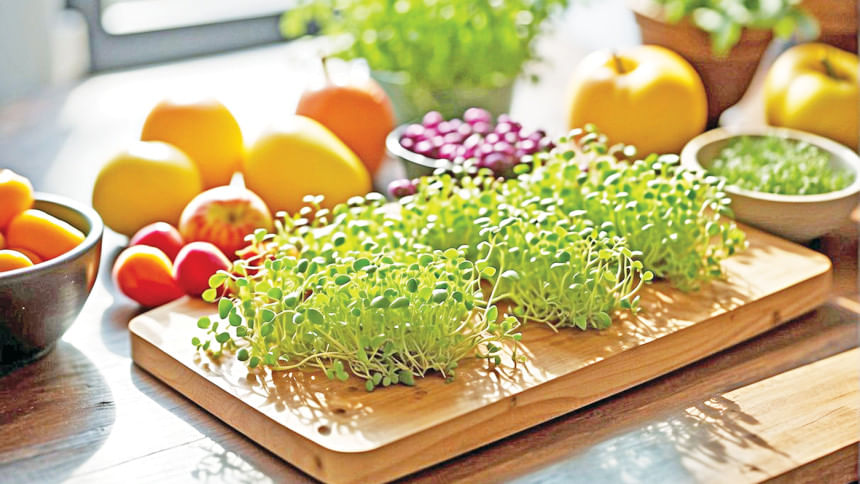Microgreens: Tiny greens with powerful health benefits

In a world drowning in junk food, a tiny leaf barely an inch tall is emerging as a silent warrior for health — the microgreen. These young seedlings of vegetables and herbs are becoming a global health trend, adding a burst of colour, texture, and flavour to salads and dishes.
Typically 1–3 inches (2.5–7.5 cm) tall, microgreens are harvested within 7–21 days of germination, after the first true leaves appear. In Bangladesh, they are mostly used in restaurants, but to enjoy their full health benefits, they should be included regularly in the diet.
Microgreens are packed with vitamins (C, E, and K), minerals (copper, zinc, iron, and magnesium), antioxidants (glucosinolates, carotenoids, and phenolic compounds), and nutrients like fibre and omega-3 fatty acids. They contain 4 to 40 times more nutrients than mature plants. Research suggests microgreens can help reduce inflammation, lower cancer risk, and support diabetes management. Fenugreek microgreens, for example, can improve sugar absorption by up to 44%. Their antioxidants may lower chronic disease risk and slow ageing.
Microgreens support heart health by reducing bad cholesterol and triglycerides. Polyphenol-rich varieties such as basil, broccoli, peas, and radish improve memory and may reduce Alzheimer's risk. Broccoli, cabbage, mustard, and radish microgreens contain sulforaphane, which may slow cancer growth and protect against colon cancer. Spinach and broccoli microgreens, rich in lutein, support eye health, while bean, pea, and lentil microgreens enhance digestion and nutrient absorption.
Microgreens are easy to grow at home—just a tray, soil, water, and seeds. Within 7–21 days, they are ready to harvest and add freshness and nutrition to daily meals.
The writer is a dietician.
Email: [email protected]

 For all latest news, follow The Daily Star's Google News channel.
For all latest news, follow The Daily Star's Google News channel. 



Comments